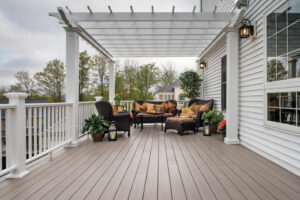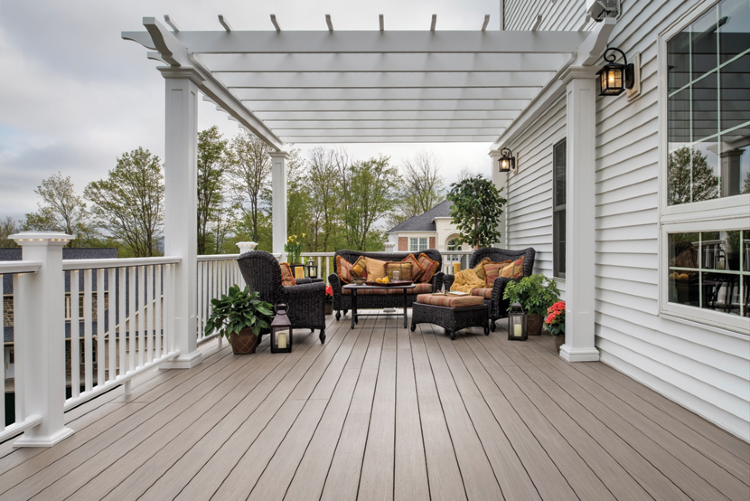A well-maintained deck can offer years of outdoor entertaining and relaxation. Regular inspections can help you catch any minor damage before it becomes a major problem.
Signs that a deck needs repair include popped nails or screws, mold and mildew, wood rot, and pest damage. These issues often indicate structural problems that may require replacing the entire deck. For professional help, contact Deck Repair Charleston SC.
When it comes to deck repair, there are a number of factors that impact the cost. The size of the deck, the extent of the repairs, and the type of materials used are all important aspects to consider. The price of labor is another major factor. It is vital to find a qualified contractor who charges reasonable rates for their services. A good way to do this is to ask for quotes from several contractors. Then, compare their prices to determine which one is the best value.
In addition to determining the cost of materials, it is also important to determine whether any applicable taxes or fees are included in the estimate. This can make a significant difference in the total cost of the project. It is also a good idea to read reviews of different contractors to ensure that they are trustworthy and skilled at what they do. It is important to get a quote for the work before beginning it. This will help you avoid unforeseen expenses and provide a baseline for comparing quotes.
A well-maintained deck is a great place to relax and entertain guests. However, a poorly maintained deck can quickly turn into a safety hazard. It is essential to inspect the deck regularly for any damage and to address issues as soon as possible. Inspect the deck carefully, paying particular attention to any areas that are in contact with the ground. If you notice any rot or splinters, it is critical to take action. If left untreated, these problems can lead to structural issues that require expensive repairs or even replacement.
Decks that are bare wood or have had their sealing degraded by sunlight and moisture are prone to rot and insect infestation. To prevent this, it is important to stain or seal the deck every one to three years. It is also a good idea to move outdoor furniture and plants around from time to time, as these can trap moisture and contribute to rotting wood.
When it comes to repairing a deck, the cheapest option is usually replacing the boards. This is a relatively quick and easy task, and it can be completed by most homeowners. If the joists are rotten or damaged, it is often necessary to replace them as well. In this case, it is important to support the remaining framework with concrete blocks or heavy posts while working. If the joists are high above the ground, it may be necessary to use scaffolding.
Materials
When repairing a deck, it’s important to use materials that will hold up to the elements. While many decks are built using pressure-treated lumber, there are other options as well. These include redwood and cedar, which are natural rot-resistant materials. The main disadvantage of these woods is that they require more maintenance, including annual power washing and staining.
In addition to the right materials, you’ll also need to make sure you have the right tools for the job. A tape measure will be helpful for determining the dimensions of replacement boards. You’ll also need a saw for cutting the new planks. You can purchase a circular saw at most home improvement stores, but it’s best to have one that specifically says it’s designed for use with treated lumber.
Other necessary tools for this project include a nail or screw remover, a hammer, and a pry bar. If you notice that a board is loose or cracked, you’ll want to use a hammer to pry it up and inspect the underside. If it’s rotting, you may need to replace the entire board.
During your inspection, be sure to check the ledger, which is where the deck connects to the house. You’ll also want to examine the posts and joists for signs of water damage. If any are rotting or rusting, you’ll need to replace them. If the deck is old, you might need to replace the joist hangers as well.
If you’re replacing the joists, you’ll need to support them with concrete blocks or other bracing. This is especially true if the existing joists are rotted or warped. You should also consider adding joist hangers to the new boards, which will help keep them from separating from the joists over time.
If you’re repairing a deck that’s already stained, you can simply add another coat of stain. However, it’s recommended that you test the color on a small area of the deck before doing the full repair. This will ensure that the stain matches the existing deck. If it doesn’t match, you can add a little bit of cement dye to the dry repair mix to make it darker.
Time
When a deck is damaged, it’s important to know when it’s time to call in the professionals for repairs. Wobbly boards and stairs, sagging sections, and loose railings are signs that the structure is in need of repair or replacement. Deck disrepair is often the result of water, salt, and sun damage. Water damage warps and rots boards, while rock salt used to melt ice in the winter can weaken joists. Sun damage can also cause sagging or cracking of the decking itself.
Unless you have extensive carpentry skills, it’s best to hire a professional to perform the repairs. In addition to ensuring the safety and quality of the work, a professional will be able to provide you with a cost estimate upfront. The final cost of the project will depend on the extent of the repairs, the materials needed, and the labor rate.
While some parts of the deck can be cleaned and sanded with a pole sander, many areas require more substantial repairs or replacement. Generally, any wood that shows signs of rotting or splintering needs to be replaced immediately. Leaving this issue unchecked can destabilize the entire deck and potentially compromise the structural integrity of your home.
The first step in replacing a deck board is to inspect the area beneath the board to ensure it’s still supported by the joists below. If the joists are showing signs of damage, they may need to be reinforced with concrete blocks or heavy posts. You can also replace existing joist hangers with new ones, but be sure to measure each joist before replacing it to ensure the new board is the correct size.
It’s also a good idea to move furniture and plants periodically, as these items can trap moisture under them and lead to deterioration. Also, be sure to wipe up food spills quickly. If left unattended, these spills can attract wood-eating insects.
It’s possible to make some minor cosmetic repairs with a pressure washer and a few cans of stain or paint. However, in most cases, you’ll need to replace the decking if it’s damaged beyond repair.
Safety
Many decks are used for relaxing and entertaining guests, but they can become dangerous if they are not maintained properly. Collapses are common, and people can be hurt by falling debris or structural failure. A few simple safety measures can keep your deck safe for you and your family.
Inspect the deck for splinters and cracks, and keep furniture and decorations away from the edges of the boards. If you notice any areas that are soft or splintering, it is important to fix them as soon as possible. This will prevent the problem from spreading and causing more damage to the deck.
Look for signs of rot, especially around the ledger board, where the deck connects to the house. A small area of rot near the fasteners may be a sign that water is getting into the wood and causing damage. Look for other signs of rot, including discoloration and softness. If you find any of these, call a professional right away.
Stairs are another area that can cause accidents if they are not properly maintained. Stairs should be free of splinters and tripping hazards. It is also important to make sure the stairs are stable and that they do not sway or bend when you walk on them.
Check the railings for looseness and gaps, and ensure that they are not too close together. Make sure the posts are not too far apart, either. If the posts are too far apart, they will be more susceptible to damage from ice and snow. Make sure the railings are securely attached and that they are able to support the weight of an adult or child.
Decks and the metal hardware that keeps them connected to the house are exposed to moisture all day, every day. Over time, this can cause metal connectors and screws to rust and weaken the structure. If you live in an area with high humidity, you might want to consider using stainless steel screws and connectors to minimize the risk of corrosion.
Also, check the connections between the deck and the house to make sure that flashing is in place. This will prevent moisture from building up underneath the deck and causing rot.

